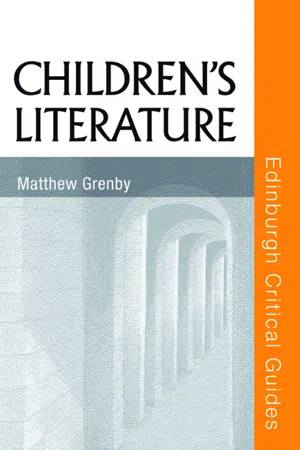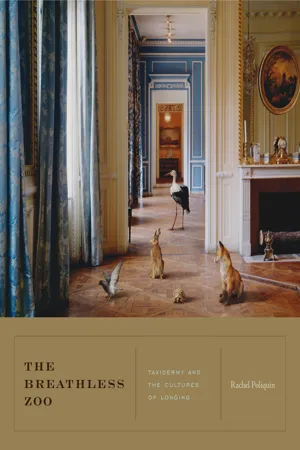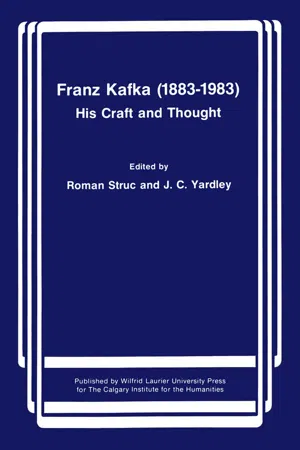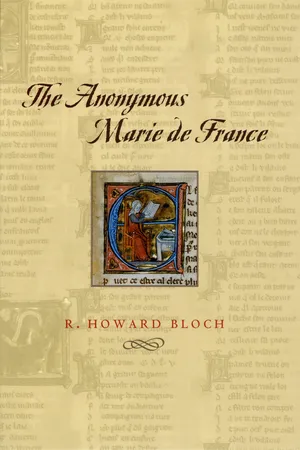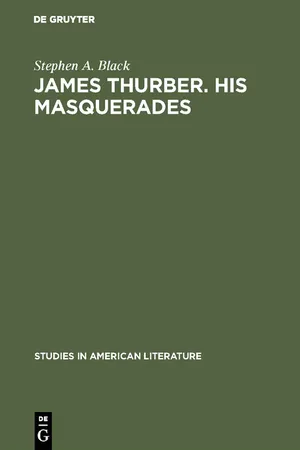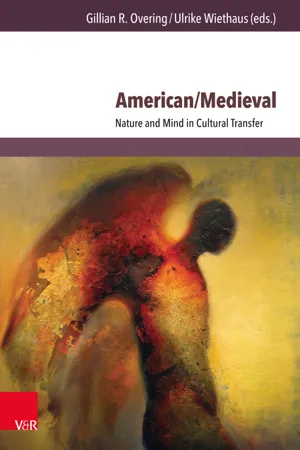Literature
Fable
A fable is a short story that typically features animals or inanimate objects as characters, conveying a moral lesson or teaching through allegory. Fables often use personification and symbolism to illustrate ethical principles or societal truths in a simple and accessible manner. Notable examples include Aesop's Fables and the stories of Jean de La Fontaine.
Written by Perlego with AI-assistance
Related key terms
1 of 5
9 Key excerpts on "Fable"
- eBook - PDF
- M.O. Grenby(Author)
- 2014(Publication Date)
- Edinburgh University Press(Publisher)
chapter-1 Fables T he classic Fable is a short, W ctional tale which has a speci W c moral or behavioural lesson to teach. This lesson is often explained at the end of the tale in an epigram or ‘moral’. Some describe human interactions: ‘The Boy Who Cried Wolf’ for instance. But most feature animals as their main characters, representing human beings, or perhaps particular types of people or kinds of behaviour. In these ‘beast Fables’ the animals are generally fairly lifelike – except that they can often talk – and they do not usually encounter humans. This distinguishes them from animals in fairy tales, often enchanted in one way or another, who interact with humans and live what are essentially human lives. Like fairy tales, Fables probably had their origins in an oral folk tale tradition and were not originally intended only for children. Also like fairy tales, Fables subsequently came to be associated primarily with the young. Fables are still being written, mainly for children, but sometimes with the hope of appealing to a mixed-age audience. These modern Fables can be much grander a V airs that the short, allegorical animal stories that W rst de W ned the genre. They are often novel-length, with many characters and intri-cate plots, like Robert O’Brien’s Mrs Frisby and the Rats of � nimh-( 1971 ). They can have complicated themes and enigmatic mean-ings, like E. B. White’s Charlotte’s Web ( 1952 ). Sometimes they seek to give much more scienti W cally accurate representations of animal life, as in Richard Adams’ Watership Down ( 1972 ). They have some-times taken their lessons from a much wider range of animals than generally feature in Aesop, as in Those Other Animals ( 1892 ) by G. A. Henty, who preferred to draw lessons from animals ‘whose good points have been hitherto ignored’ – like the bacillus – and ‘to take down others from the pedestal upon which they have been placed’. - eBook - ePub
Camus' Literary Ethics
Between Form and Content
- Grace Whistler(Author)
- 2020(Publication Date)
- Palgrave Macmillan(Publisher)
symbol’ in this chapter—that is, an individual object or element used to represent something more profound and conceptual, such as wedding band used to represent commitment. As will be seen over the course of the following chapter, each of these terms has a place in Camus scholarship, but regrettably their distinctions and implications are yet to be fully delineated. This is what I hope to rectify here.Accordingly, Sect. 2 will lay out a theoretical framework for the chapter. Here I draw on Lacoue-Labarthe’s conception of ‘Fable’, proposing that the enclosed analysis of philosophical method is similar to the one which I suggest informs Camus’ own. Following on from this (in Sect. 3 ), I examine the difference between the aims of political allegories (such as those of George Orwell ) and Camus’ own endeavours inLa Peste, responding to Roland Barthes’ famous critique of the novel by drawing on the aforementioned distinctions between Fable and allegory. The subsequent section (Sect. 4 ) consists in an analysis of the relationship betweenLe Mythe de SisypheandL’Etrangerwhich goes beyond the stylistic analysis from the previous chapter; here I suggest that we readL’Etrangeras a parable for the absurd and that his deployment of myth inLe Mythe de Sisypheaims towards a metaphysical truth worthy of the Greeks’ original conception of the term. In Sect. 5 I look at Harry Slochower’s 1948 essay, ‘The Function of Myth in Existentialism’, bringing it into dialogue with Camus’ own critique of existentialism as manifested in the short story,Le Renégat. - eBook - PDF
The Breathless Zoo
Taxidermy and the Cultures of Longing
- Rachel Poliquin(Author)
- 2012(Publication Date)
- Penn State University Press(Publisher)
Beast Fables draw from intimate lived experience with animals and depend on reasonably fixed communal expectations about animal behaviors. In a word: proximity. The way we live—or do not live— with other animals shapes the sorts of stories that can be told and understood. Nicholas Howe suggests that Fables originated in the juxtaposition of house, barnyard, and wilderness. The Fable’s symbolic setting involves interplay between two clearly demarcated spaces—the safety of the home and the precarious un- known of the wilderness—and, crucially, makes use of the intermediate zone be- tween the two: the barnyard. “This sense of place does not govern each and every Fable ever told,” Howe writes, “but it does underlie the Fable’s sense that the human and animal exist together as something other than a rigid binary opposition.” Put another way, caught between the domestic and the wild, the setting explains “how it is that humans and animals can do what is so palpably obvious they do: speak to each other.” This experiential knowledge is always based on cultural conventions, but it remains rooted in observed behavior. As Howe puts it, when “we lived and worked in barnyards and knew animals as something other than pets or exotica, we understood that the beast Fable could have a moral function. This knowledge came with belonging to a group defined at least in part by its knowledge of animals, knowledge not strictly speaking scientific but rather traditional or experiential.” 2 In his classic essay “Why Look at Animals?” John Berger uses Homer’s cel- ebrated animal metaphors to explain the use—even need—of speaking through animals. Book 17 of The Iliad begins with Menelaus standing over Patroclus’s body allegory | 173 to prevent the Trojans from stripping the corpse. - eBook - PDF
Greek and Roman Folklore
A Handbook
- Graham Anderson(Author)
- 2006(Publication Date)
- Greenwood(Publisher)
We must add “often” because it is easy enough to find materials in the standard Fable collections that have neither animal speakers nor even any explicit lesson or moral, and yet their material seems somehow to be in the right place. We also need to underline the expression “lesson for life”; it is not Q 92 Greek and Roman Folklore so very often a moral in our sense, like “adultery is morally questionable” or “crime does not pay.” It tends, instead, to be a pearl of popular wisdom, often to do with social hierarchy, such as “don’t have thoughts above your station,” “keep your head below the parapet,” or “know how to survive, and you won’t get hurt.” This sort of wisdom might remind us of materi- als in the Book of Proverbs in the Old Testament and in related literature. It tends to be the common property of a fairly rudimentary community. Sometimes this is reflected in the very coarseness of the subject matter: one thinks of the Sumerian Fable of the fox, who relieves himself in the ocean, then proclaims what a great expanse he has filled with his piddle. 3 The Greco-Roman equivalent is more tasteful: the fly riding on the chariot wheel exclaims, “What a great cloud of dust I am stirring up!” 4 We are left with the suspicion that this Fable may already have traveled far, even if it has lost some of its crude spontaneity along the way. We tend to associate Fables with a supposed “author” (Aesop) and with a specific type of subject matter (stories of talking animals). All we can really say on this score is that we have fallen heir to a very miscellaneous collection of popular materials and that these are generally associated with Aesop. 5 The Fable was early incorporated into literature in some way or other, and more or less literary workings of it persist from Hesiod around 700 b.c . through to the versifying fabulists of late antiquity. - eBook - PDF
Franz Kafka (1883-1983)
His Craft and Thought
- Roman Struc, John Yardley, Roman Struc, John Yardley(Authors)
- 2006(Publication Date)
- Wilfrid Laurier University Press(Publisher)
Many a definition of the Fable must today be considered outdated. Neither the predictable regularity of animal behaviour nor the limited repertoire of the animal protagonists' personality traits explains the Fable. They behave too differently from zoological deter-minations and too independently of the characters attributed to them by folk wisdom. It is the inalienable mixture of human and animal behaviour, of the strange and the familiar, which accounts for the strong attraction that the Fable has exerted. But however much he may have borrowed from it, Kafka also thoroughly reformed the Fable. As the ground on which his animal parables rest and out of which they emerge, the Fable genre acquires an important meaning function for Kafka. Aside from the sheer pleasure of telling the tale, the Fable's message, whether joyous or 30 Egon Schwarz / Animal Tales and European Fable 85 skeptical, affirmative or rebellious, remains unambiguous, while Kafka's betrays a profound ambivalence and sense of suffering. Kafka's animal stories are not rebuses, where every image conceals a sharply contoured thought. They are riddles, not ones that can be deftly solved, but rather of the type remarkable for their enigmatic uninterpretability. Readers have found this kind of depth in the Fable. The Fable is always greater than its lesson, it is said. In spite of its riddle-like nature, which only allows one to intuit solu-tions rather than to state them, and only permits individual probing rather than extrapolating generalizable truths, Kafka's animal parables can hardly be said to be degenerate forms of the Fable. On the contrary, they fulfill the requirements of the Fable in a way that is most appropriate for his time. Kafka's animals and animal stories are indices of an obsessed, nightmarish, anti-utopian world, which is increasingly the one in which we now live. 31 86 Franz Kafka Notes 1 Sa'mtliche Werke, ed. Karl Coedeke (Stuttgart & Berlin: Cotta, n.d.) vol. - eBook - PDF
- R. Howard Bloch(Author)
- 2011(Publication Date)
- University of Chicago Press(Publisher)
Beastly Talk: The Fables The word Fable designates both a discourse and a literary genre, the root re-ferring, as in the fabliau “La Vieille Truande,” to the raw matter of a story out of which the poet makes a tale, matter conceived before literary treatment: Des Fables fet on les fabliaus. Et des notes les sons noviaus. Et des materes les canchons, Et des draps, cauces et cauchons. 1 Out of Fables one makes fabliaux; out of notes, new sounds; out of material, songs; and out of cloth, socks and shoes. Functioning as the aventure does for the lai, the basic material of the Fable, having been transformed, gains the resonance of a didactic “tale” alongside the dit, beau dit, mots, beaux mots, or aventure, which also carries, as we have seen, the meaning “story.” Because of the lesson that it is intended to teach, the Fable is closer to the “exemplum” than to other short forms, yet remains distinct from the “miracle” as from the dit moral. For however much the Fable may exhibit elements of realism and of the new materialism of France’s and Anglo-Normandy’s burgeoning courts and urban centers, about which we will have more to say later, it cannot escape association with the oppo-site of the truth. In a semantic heritage reaching back to late antiquity, the word Fable is also synonymous with a lie, with ruse, or with fi ction, its mean-ing doubling that of tru ff e, risée, mensonge, merveille, fantosme, bourde, or gabet, a distinction that the poet of the epic Aiol invokes in generational and generic terms: 2 Cil novel jongleur en sont mal escarni: Por les Fables qu’il dient ont tout mis en oubli, La plus veraie estoire ont laissiet et guerpi, Je vos en dirai une qui bien fait a cierer. 3 These new jongleurs are badly shamed. Because of the Fables they recount they have squandered everything, and the most truthful story they have for-gotten and abandoned. - eBook - PDF
James Thurber. His masquerades
A critical study
- Stephen A. Black(Author)
- 2018(Publication Date)
- De Gruyter Mouton(Publisher)
94 Fable AND FAIRY TALE as a means of representing both the matter and essence of reality. 1 It is this which enables the artist to control his world, to become the single artificer of the world he sings. To this end, style be-comes an extremely important element in the making of comedy. The Fables we shall consider here can be divided into three rough categories. The first group includes the very short items in Fables for Our Time and Further Fables for Our Time. In the second group are pieces which begin as if they were indeed representational stories, but in which strange and wondrous things happen - pieces such as Mr. Preble Gets Rid of His Wife, A Box to Hide In, and Back to the Grades. 2 The third category - and perhaps the most interesting - is Thurber's fairy tales: Many Moons, The Great Quillow, The White Deer, The 13 Clocks, and The Wonderful O. Of these latter, the first three will be examined in some detail. In his Parable in Pictures, The Last Flower (1939), Thurber so closely combines pathos and farce that one doesn't know, at the end, whether to laugh or cry. The concrete details of the prose Fables are here provided in the drawing - though fully to describe these would take more space than can be allowed. Created just as World War II was breaking out in Europe, the series of drawings begins with the collapse of civilization follow-ing World War XII. Cities, forests, gardens and works of art have been dessicated; malevolent-looking birds hang in the air over tilting church steeples, broken statuary, shattered trees, and the desolate, naked people. The few survivors are dying out and the race would have become extinct except that a young girl happened upon the last flower left in the world. She tried to tell the others about it, but no one cared; finally a young man went with her and together they nurtured it. - eBook - PDF
Good Books Matter
The background information teachers need to find, choose, and use children`s literature to help their students grow as readers
- Larry Swartz, Shelley Stagg Peterson(Authors)
- 2011(Publication Date)
- Pembroke(Publisher)
From India, the Jataka tales were also moralistic animal stories. They were much longer than Greek Fables, intended to instruct young princes on appropriate behavior. 63 Some scholars believe that several storytellers initially told Fables. They question the existence of Aesop, the Greek slave. Three award-winning illustrators have created visually stunning books of Fables. In Jerry Pinkney’s Aesop’s Fables, pencil, colored pencil, and watercolors portray the animals and multi-ethnic people realistically with remarkable texture and detail. Pinkney’s collection is extensive, containing 60 Fables. The illustrations steal the show in Helen Ward’s Unwitting Wisdom: An Anthology of Aesop’s Fables. Ward introduces each of her 12 favorite Fables with arresting watercolor title pages and pithy statements summing up the Fable (e.g., “A Time to Dance – in which a cricket learns about work—THE HARD WAY”). In Mice, Morals & Monkey Business Christopher Wormell brings life to the crafty animals of Aesop’s Fables with exquisite linoleum-block prints. Award-winning writers have created books of Fables, as well. In Birds of a Feather and Other Aesop’s Fables, folksinger and writer Tom Paxton retells ten of Aesop’s Fables in verses with join-along rhythms, accompanied by Robert Rayevsky’s grainy, textured, surrealistic illustrations. If Jane Yolen’s name appears on a book, it’s worth taking a second look. She does not disappoint in A Sip of Aesop, using rhymes to write modern retellings of 13 Fables, including “The Dog in the Manger” and “Counting Your Chickens.” In Aesop & Company, Barbara Bader introduces the origins of the stories and retells the legends sur- rounding Aesop’s life. Detailed etchings by award-winning Arthur Geisert add visual complexity to the 19 Fables. - eBook - PDF
American/Medieval
Nature and Mind in Cultural Transfer
- Gillian R. Overing, Ulrike Wiethaus, Gillian R. Overing, Ulrike Wiethaus(Authors)
- 2016(Publication Date)
- V&R Unipress(Publisher)
At the same time, individual elements, characters, motifs and themes can be transferred from one type to another as discrete components from the sequence in which they were previously embedded. Animal Tales and Narrative Theory in Western Civic Tradition The Animal Tale is seemingly as old as human culture, with examples to be found all over the world, both in ancient and modern times. Animals in folklore and myth are often treated as mirrors of human society, as metaphors, and as bridges between human and divine worlds. We see ourselves and read ourselves in animal form. An ancient poem in the book of Amos eloquently captures the mirror function of the animal world, in this case portraying the acts and in- tentions of God. Amos 3:3 Do two walk together unless they agreed to meet? 3:4 Does a lion roar in the scrub when it has taken no prey? b Does a young lion give voice from its lair unless it has made a catch? 3:5 Does a bird drop to the earth when there is no lure for it? b Does a trap spring up from the ground and yet catch nothing? 3:6 If the shofar is blown in the city then won’t the people shiver? b If harm befalls a city then hasn’t YHWH done it?[…] 3:8 The lion has roared; who will not fear? 1 Vladimir Propp, Morphology of the Folk Tale, ed. Louis A. Wagner, trans. Laurence Scott, 2 nd ed. (Austin: University of Texas Press, 1968). Margaret D. Zulick 204 © 2016, V&R unipress GmbH, Göttingen ISBN Print: 9783847106258 – ISBN E-Book: 9783847006251 b YHWH has spoken; who will not prophesy? 2 This remarkable prophetic poem presents a series of rhetorical questions. The meaning of the poem depends on its audience knowing “the way of” an animal in its habitat to indicate that God is just as inexorable in his providence as the lion’s roar or the trap shutting on a bird. The animal with its habits reflects the order of things. The great myths are told in a world where human beings and divine beings interact in a timeless cycle.
Index pages curate the most relevant extracts from our library of academic textbooks. They’ve been created using an in-house natural language model (NLM), each adding context and meaning to key research topics.
